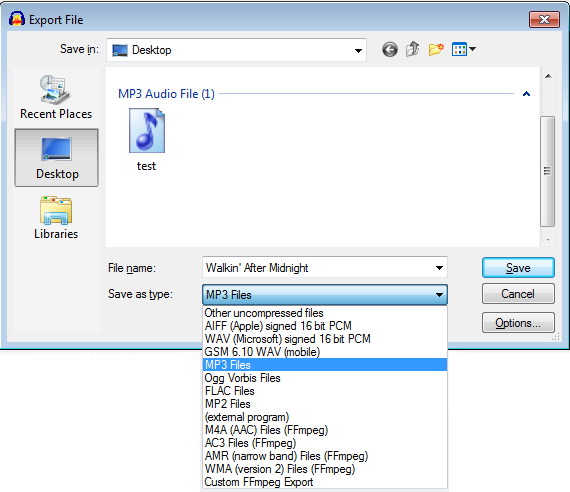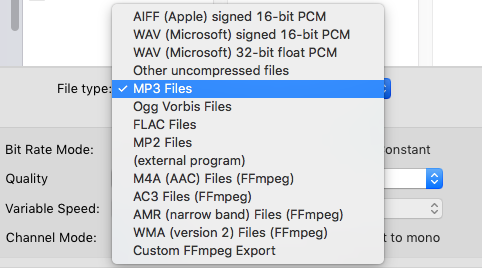

WAV HeaderĪs mentioned above, wav format is a header set on PCM, which specifically includes sampling size, sampling frequency, channel number and other information. Obviously, such a large code stream cannot be transmitted on our network, so it needs to be compressed. The code rate of dual channel PCM encoded wav file is 44.1KHz 162 = 1411.2kb/s, 1.4m data transmission per second. The sampling rate is 44.1KHz and the sampling size is 16bit. Number of channels: mono, dual, multichannel and more than three channels are called stereo.īit rate of audio stream of a PCM = sampling rate Sample sizeNumber of channels, such as:.Sample size: how many bits are used to store a sample.The header stores PCM basic information, so it basically stores PCM data. In order to run JAVE on other platforms you have to replace the built-in ffmpeg executable with another one suitable for your needs. JAVE includes and uses a ffmpeg executable built for Windows and Linux operating systems on i386/32 bit hardware platforms. Wav: when a header is sleeved on the PCM data, it becomes wav data. I think that Kaldi needs a StreamReader class, that can be used instead of the Wave classes when the input is a stream of raw PCM audio. JAVE runs on a Java Runtime Environment J2SE v.1.4 or later.PCM: pure audio data without any format.

So you may need to play around with sample rates to get the output right.įfmpeg -f s16le -ar 22500 -ac 2 -i YouInputFileName.pcm -ar 44100 -ac 2 YouOutputFileName.Then the corresponding data is converted into binary and can be transmitted on the link. For example if you replace 11250 with 22500 as in the command below your output file pitch and speed will be increased. If you want to convert a Virtual Recorder file specially you can use this terminal command below changing the file names to what you need.įfmpeg -f s16le -ar 11250 -ac 2 -i YouInputFileName.pcm -ar 44100 -ac 2 YouOutputFileName.wavĬonverting pcm files created by other applications may have varying results due to the sample rate of the source file.

If you try to run any of the commands below and you don’t have ffmpeg installed you will be notified ffmpeg needs to be installed and it will give you the command to type in and run to install it. The terminal will open already set to run against the directory the pcm file is located in. If you don’t know how to do this use the GUI file explorer to navigate to the directory where the pcm file is and then right click on white space and click on the option to open a terminal window. Open a terminal window and navigate to the where the pcm file is. Initially I had some trouble getting the conversion to work. I sent the file over to my Linux laptop, running Linux mint, to convert it. I used the app Virtual Recorder thinking I’d be able to just share the file afterwards but Virtual Recorder creates pcm files not typical mp3 files.

Over the weekend I had to make a recording on my Android phone.


 0 kommentar(er)
0 kommentar(er)
